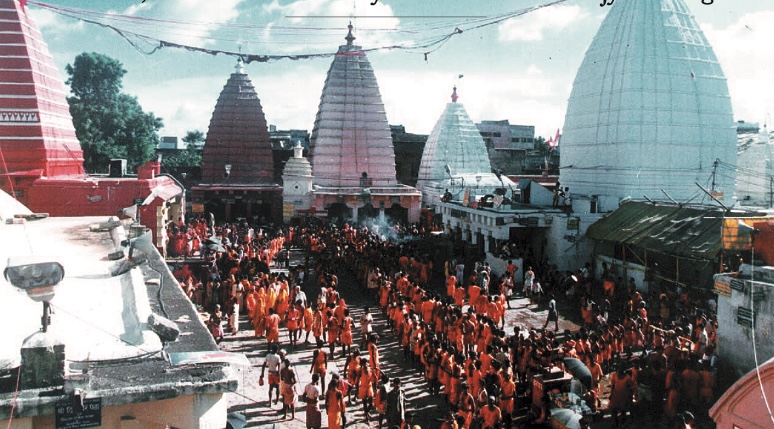By Gitanjali Chak
On every Monday in the Hindu month of Shravan (July/August), Deoghar turns into a saffron city, with hundreds of thousands of devotees clad in orange-shaded robes offering worship to Lord Siva by bathing the Siva Lingam with water.
This year a record number pilgrimaged to the temple, one of the famed Jyotir Lingam Siva temples of India, located 150 miles northwest of Kolkata in the newly created state of Jharkhand. By the second Monday, 598,000 devotees, including 448,000 men, 150,000 women and 60,300 Dak Bams, had offered the holy water. The Kanwarias, or pilgrims, are classified into two categories: the ordinary ones and the Dak Bams. The Dak Bams are those that reach the Baba Vaidyanath (Siva as “Lord of Physicians”) Mandir without taking any break or eating anything en route, yet radiating an enigmatic inner joy.
When the doors of the temple were thrown open at 3:15am on the very first Monday, an eight-kilometer-long queue of devotees, including foreigners and even the physically challenged, had assembled at the main temple at Deoghar. Chants of “Bol Bam” and “Har Har, Mahadev” filled the air.
The barefoot devotees braved inclement weather and a tough terrain. They started the previous day at Sultanganj, 108 kilometers away. There they collected Uttarvahini Ganga water in kanwars, decorated sticks with pots on each end, and rushed to Deoghar in just twelve hours. Innumerable pandas and pujaris (priests) await the pilgrims to help them with their worship. They maintain such a complete database that they can tell you if and when any of your ancestors visited Babadham.
Each pilgrim is allowed but a few moments to pour his water over the Siva Lingam and offer sandal paste and rice. They complete their worship by touching the Lingam, by which they hope to have their desires fulfilled.
There are 22 temples within the walled complex, dedicated to different Deities, with Lord Siva considered to be the Supreme. The top of the Siva Lingam is slightly broken, that damage ascribed to attempts by Ravana, the king of Sri Lanka, to uproot it. According to the story, when Ravana was given the Lingam by Lord Siva, he was told not to set it down until he reached Lanka. He did not heed this advice, and after setting it down in Deoghar, was unable to move it again.


